
Timeshare vacation company Hilton Grand Vacations (NYSE:HGV) fell short of the market’s revenue expectations in Q1 CY2025, with sales flat year on year at $1.15 billion. Its non-GAAP profit of $0.09 per share was 83% below analysts’ consensus estimates.
Is now the time to buy Hilton Grand Vacations? Find out by accessing our full research report, it’s free.
Hilton Grand Vacations (HGV) Q1 CY2025 Highlights:
- Revenue: $1.15 billion vs analyst estimates of $1.24 billion (flat year on year, 7.6% miss)
- Adjusted EPS: $0.09 vs analyst expectations of $0.53 (83% miss)
- Adjusted EBITDA: $180 million vs analyst estimates of $236.4 million (15.7% margin, 23.8% miss)
- Operating Margin: 34.1%, up from 5.7% in the same quarter last year
- Free Cash Flow was $6 million, up from -$374 million in the same quarter last year
- Members: 725,000, in line with the same quarter last year
- Market Capitalization: $3.18 billion
Company Overview
Spun off from Hilton Worldwide in 2017, Hilton Grand Vacations (NYSE:HGV) is a global timeshare company that provides travel experiences for its customers through its timeshare resorts and club membership programs.
Sales Growth
A company’s long-term sales performance is one signal of its overall quality. Any business can put up a good quarter or two, but the best consistently grow over the long haul. Luckily, Hilton Grand Vacations’s sales grew at an impressive 22.1% compounded annual growth rate over the last five years. Its growth beat the average consumer discretionary company and shows its offerings resonate with customers.
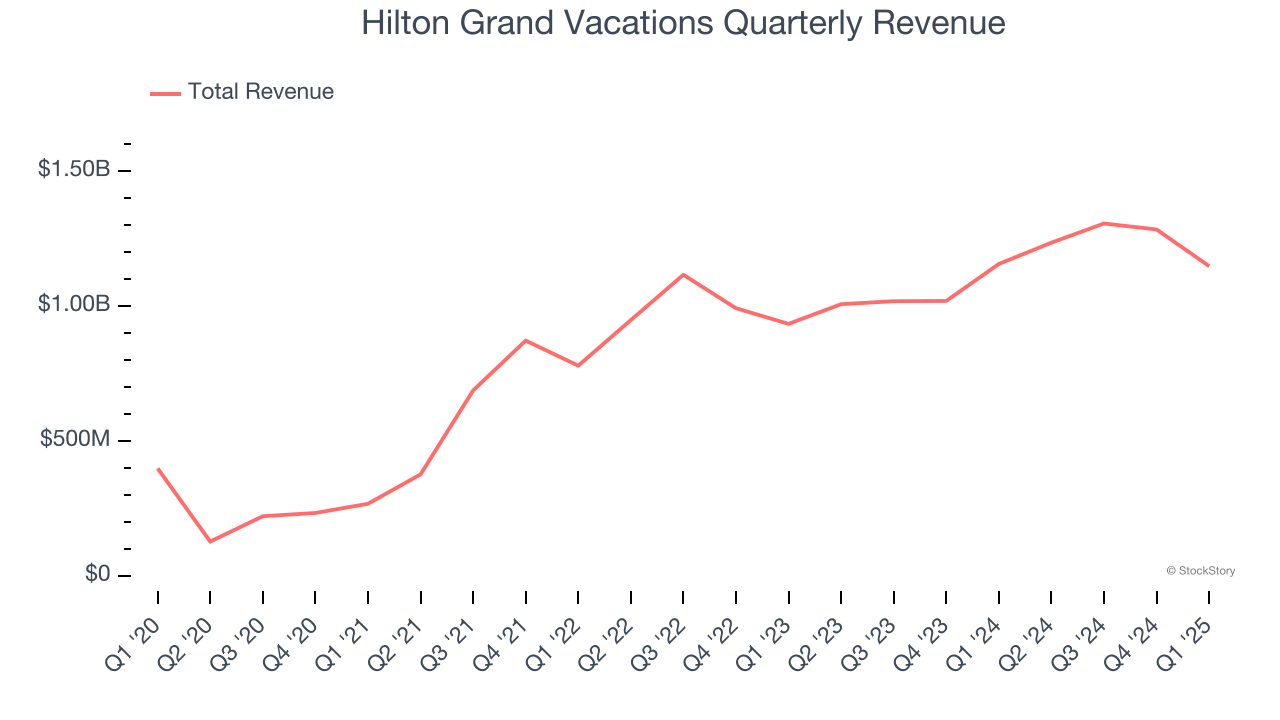
We at StockStory place the most emphasis on long-term growth, but within consumer discretionary, a stretched historical view may miss a company riding a successful new property or trend. Hilton Grand Vacations’s recent performance shows its demand has slowed significantly as its annualized revenue growth of 11.6% over the last two years was well below its five-year trend. 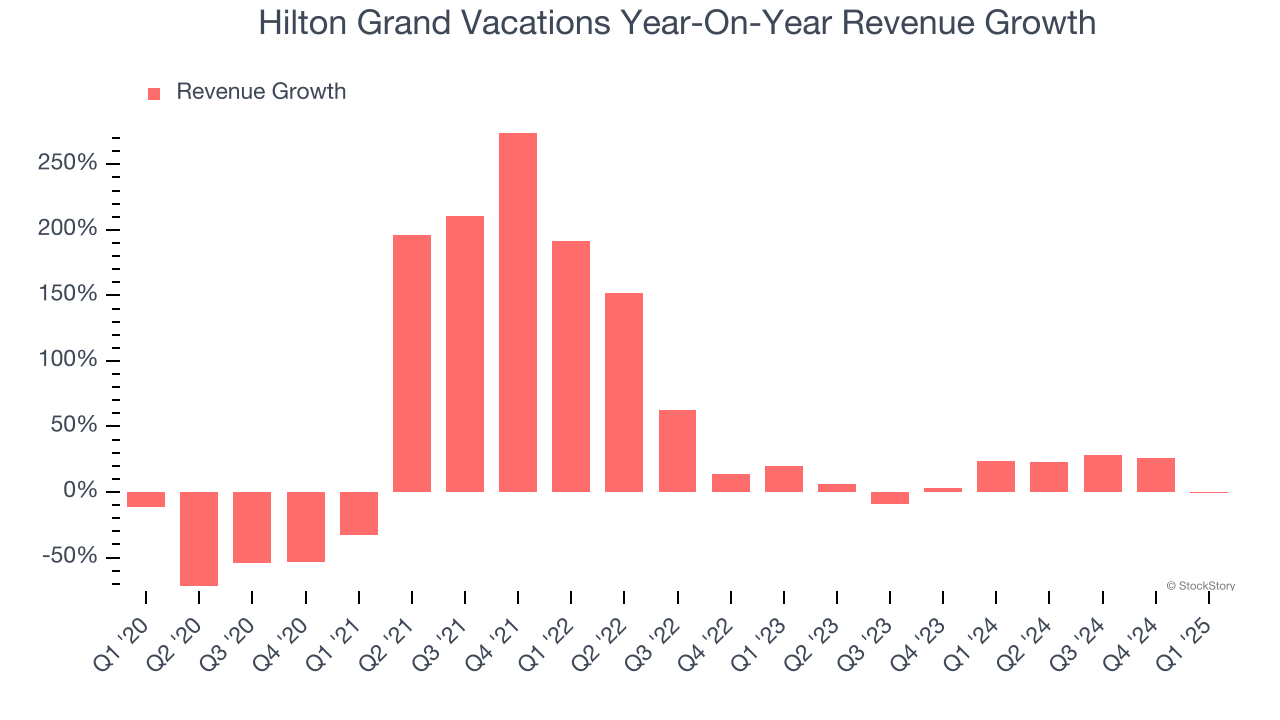
We can better understand the company’s revenue dynamics by analyzing its number of members and conducted tours, which clocked in at 725,000 and 174,525 in the latest quarter. Over the last two years, Hilton Grand Vacations’s members averaged 19.8% year-on-year growth while its conducted tours averaged 24% year-on-year growth. 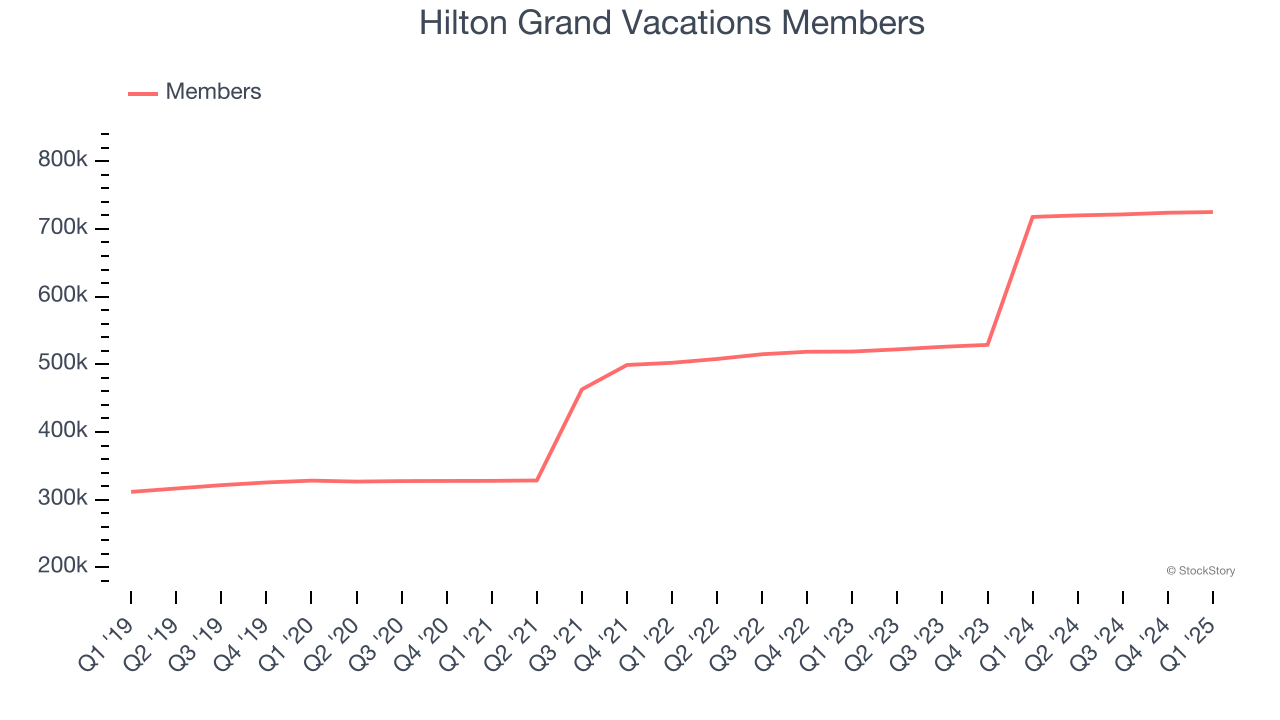
This quarter, Hilton Grand Vacations missed Wall Street’s estimates and reported a rather uninspiring 0.7% year-on-year revenue decline, generating $1.15 billion of revenue.
Looking ahead, sell-side analysts expect revenue to grow 11.3% over the next 12 months, similar to its two-year rate. This projection is underwhelming and indicates its newer products and services will not lead to better top-line performance yet.
Today’s young investors won’t have read the timeless lessons in Gorilla Game: Picking Winners In High Technology because it was written more than 20 years ago when Microsoft and Apple were first establishing their supremacy. But if we apply the same principles, then enterprise software stocks leveraging their own generative AI capabilities may well be the Gorillas of the future. So, in that spirit, we are excited to present our Special Free Report on a profitable, fast-growing enterprise software stock that is already riding the automation wave and looking to catch the generative AI next.
Operating Margin
Operating margin is an important measure of profitability as it shows the portion of revenue left after accounting for all core expenses – everything from the cost of goods sold to advertising and wages. It’s also useful for comparing profitability across companies with different levels of debt and tax rates because it excludes interest and taxes.
Hilton Grand Vacations’s operating margin has been trending up over the last 12 months and averaged 14.5% over the last two years. Its solid profitability for a consumer discretionary business shows it’s an efficient company that manages its expenses effectively.
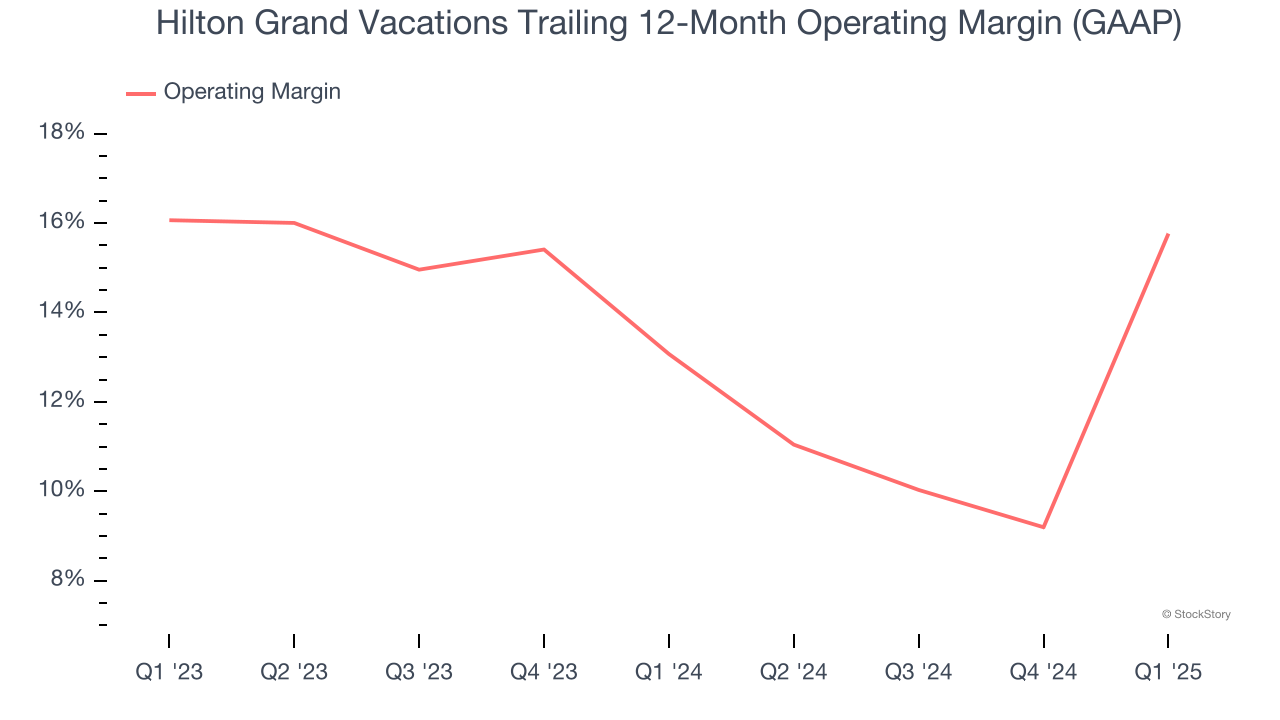
In Q1, Hilton Grand Vacations generated an operating profit margin of 34.1%, up 28.4 percentage points year on year. This increase was a welcome development and shows it was more efficient.
Earnings Per Share
We track the long-term change in earnings per share (EPS) for the same reason as long-term revenue growth. Compared to revenue, however, EPS highlights whether a company’s growth is profitable.
Sadly for Hilton Grand Vacations, its EPS declined by 3.9% annually over the last five years while its revenue grew by 22.1%. However, its operating margin actually expanded during this time, telling us that non-fundamental factors such as interest expenses and taxes affected its ultimate earnings.
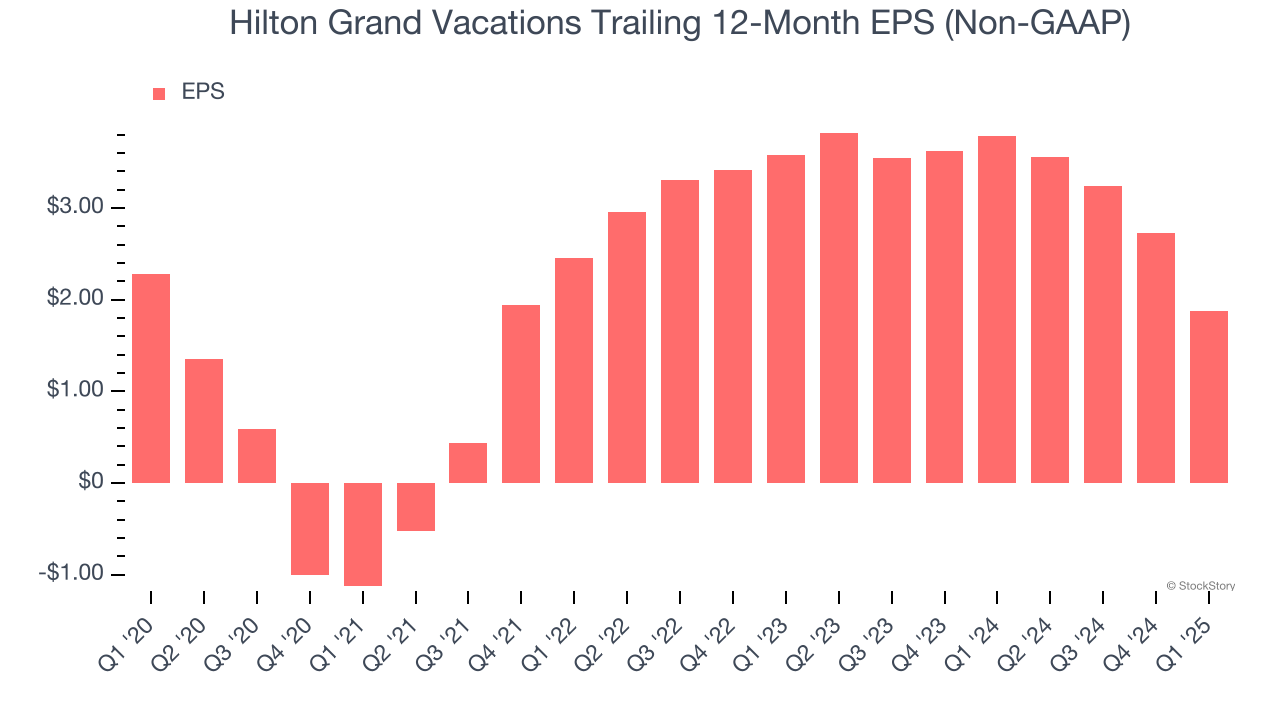
In Q1, Hilton Grand Vacations reported EPS at $0.09, down from $0.94 in the same quarter last year. This print missed analysts’ estimates. Over the next 12 months, Wall Street expects Hilton Grand Vacations’s full-year EPS of $1.87 to grow 98.6%.
Key Takeaways from Hilton Grand Vacations’s Q1 Results
We struggled to find many positives in these results as its revenue, EPS, and EBITDA fell short of Wall Street’s estimates. Overall, this quarter could have been better, but the stock traded up 9.4% to $36.77 immediately after reporting.
Big picture, is Hilton Grand Vacations a buy here and now? If you’re making that decision, you should consider the bigger picture of valuation, business qualities, as well as the latest earnings. We cover that in our actionable full research report which you can read here, it’s free.
